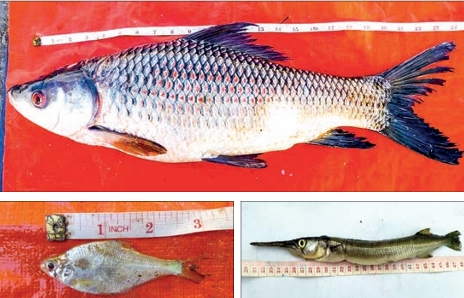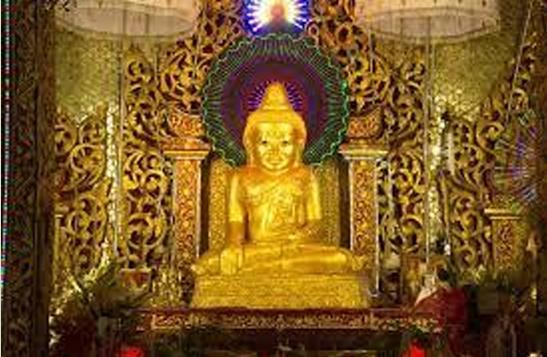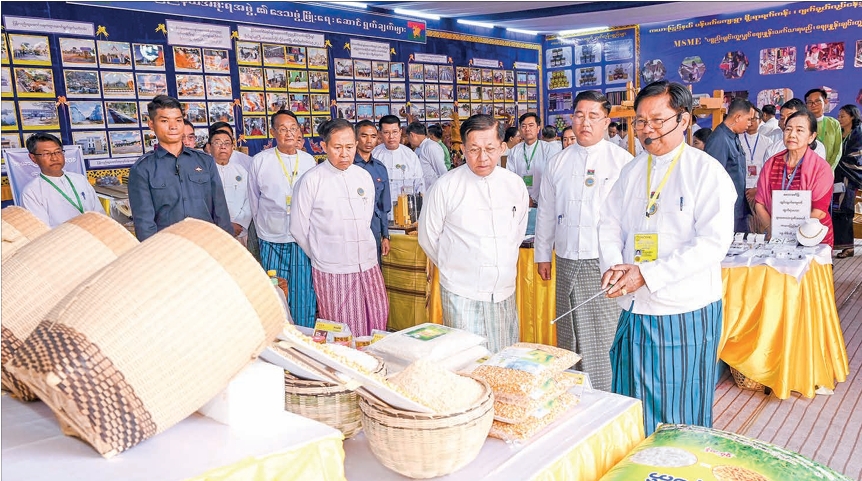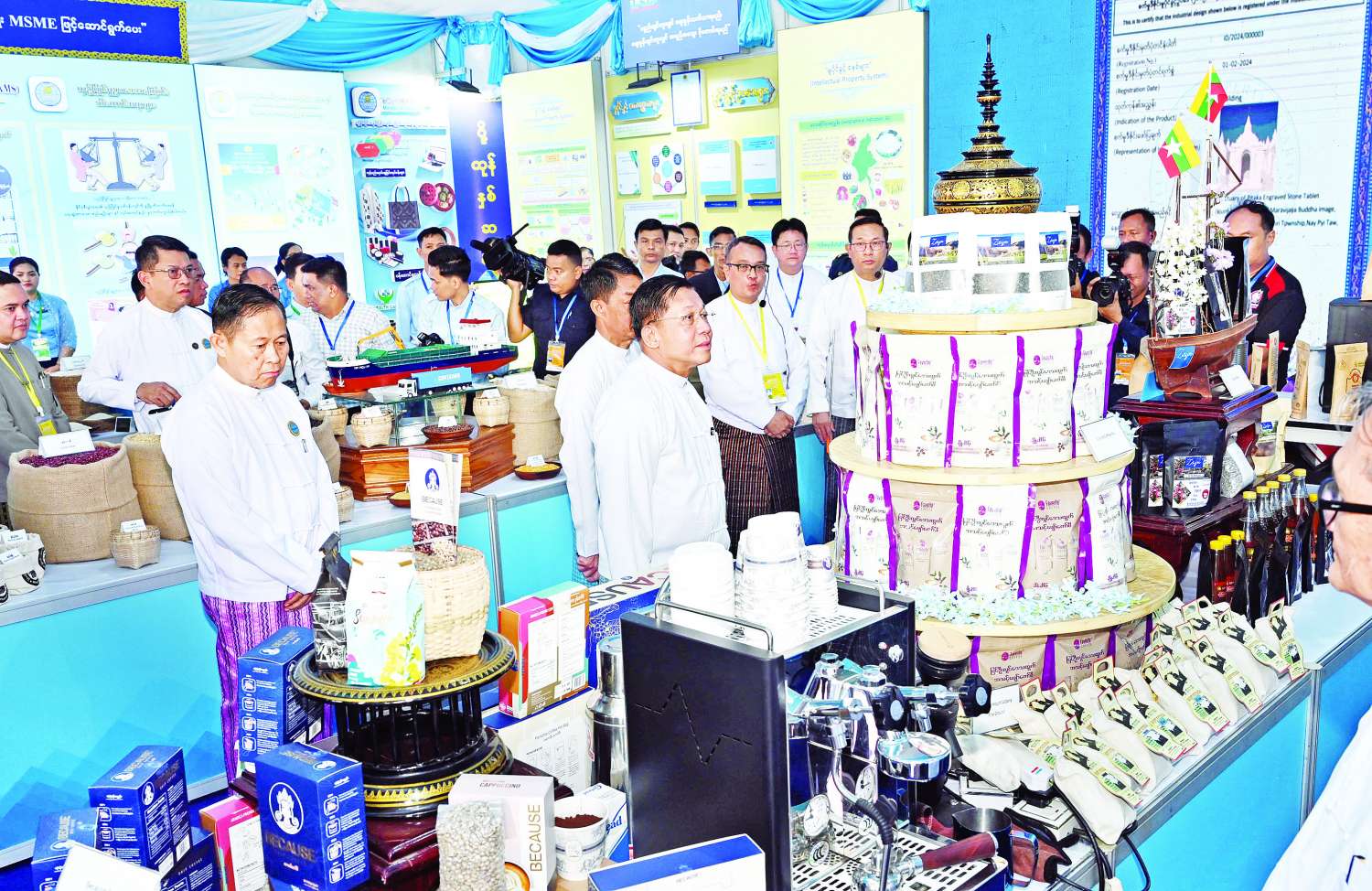When the plane we boarded was zooming down into the Sittway airport, a wide expanse of blue water fringed with greenery coconut-groves was swirling into my view. As soon as it landed at the air-port, our team consisting of my parents, my elder sister and myself went direct to a hotel near the Myoma market where we were to put up. We spent two days in Sittway visiting famous pagodas, Buddha images and some relatives. It is said that Sittway, the capital of Rakhine State, located at the mouth of the Kaladan river, was established in 1826 and that its original name was Akyab which was taken after the Akyab pagoda standing a few miles to the west of the town.
After the two-day stay at Sittway, we started on the pilgrimage to the Maha Myatmuni Buddha image in Kyauktaw township. Our car left Sittway early in the morning. It ran fast along the Yangon-Sittway highway. Some hamlets, paddy-fields and low hills on the sides of the road were left behind kaleidoscopically as our car scudded along. We passed the Kyauk-tan bridge and the Amyingyun bridge and soon arrived at Ponnagyun, a small town located on the western bank of the Kaladan river, about nearly 20 miles from Sittway. Beyond it, we saw the Urittaw pagoda glittering in the glow of the rising sun at the top of a wooded hill towering above the Kaladan river. It is said that the skull of the Buddha was enshrined in it.
We continued our journey along the highway. I espied the Gu wa Phaya, one of the most well -known ones in Ponnagyun township, on the road-side. Soon afterwards, we reached Yoe ta-yok village with the Be-ngar-yar mountain in the background, which jutted starkly up from the neighbouring landscape. Due to its beauty, it is metaphorically called ‘ Mt. Fuji of Rakhine’. I noticed a mass of white clouds gathering above it. I sometimes saw some birds in flight towards the nearby forested foothills of the Kan-zauk mountain. Then we stopped over at a footstall abuzz with passengers on the road side for twenty minutes. Out of hunger, we wolfed down Rakhine Monhti ( Rakhine traditional rice-vermecilli soup) and coffee there. Some minutes afterwards, our car passed the Kan zauk-mountain bridge which spanned the Yoe creek, a major tributary of the Kaladan river.
At about 11 a.m, our car came to the Kacchapanadi bridge which connected the two opposite banks in Kyauktaw township. It is said that it was the earliest of the rivercrossing bridges which had been ever built in Rakhine State and that it was 1312.5 feet in length. From the bridge, we saw some Siberian-geese and wild ducks flying over the river flapping their wings and some cargo-boats inching up and down. When we got to the bank of Kyauktaw, we drove across some villages scattered about in the outlying area of the town and soon arrived at Srigut mound where the well-known Maha Myatmuni Buddha Image existed. We paid homage to the Buddha image and offered flowers, fruits and candles to it.
Then we went round the shrine-hall. The Rakhine traditional chronicles say that the Maha Myatmuni Buddha image was cast out of pancaloha (five noble metals) in the presence of the Buddha who visited Dhannavati city at the mental invitation of King Candasuriya and that it had been the epicenter of Buddhism in Rakhine for many centuries. I discovered some debris of bricks and a few aligning brick-works exposed in the fields surrounding Srikut mound. It is known that they were the remnants of the Third Dhannavati city which thrived between the 6th century B.C and the 4th century A.D and that it was established by King Candasuriya and came to an end during the reign of King Taing Candra. We donated some cash to the trustees of the Buddha image, left Srigut mound at about 2 p.m and proceeded to Minbya where some of my relatives resided.
To conclude, I found that it is a rewarding and exploratory trip, for we were refreshed by the beautiful sea-scape and landscape on the way and, moreover, got some knowledge on Rakhine history.







